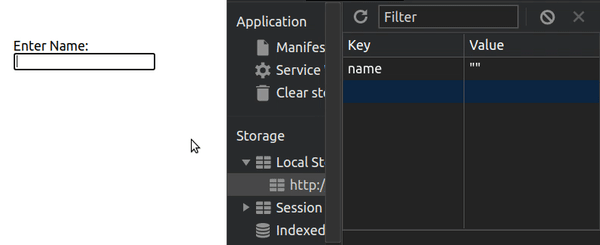Local Storage in React
LocalStorage in React
In the ever-evolving landscape of web development, efficient data management is key to creating dynamic and responsive applications. Two common tools for client-side data storage are Local Storage and Cookies. In this article, we'll delve into the advantages of using Local Storage, illustrated through a React.js example, and discuss scenarios where it outshines Cookies.
Understanding the Code:
Before we explore the benefits of Local Storage, let's examine a simple React.js code snippet showcasing how to add an object to Local Storage and retrieve it.
// ... (import statements)
const App = () => {
const [myObject, setMyObject] = useState({ key: 'value' });
const addObjectToLocalStorage = () => {
localStorage.setItem('myObjectKey', JSON.stringify(myObject));
};
const getObjectFromLocalStorage = () => {
const storedObject = localStorage.getItem('myObjectKey');
if (storedObject) {
const parsedObject = JSON.parse(storedObject);
console.log(parsedObject);
}
};
return (
<div>
<button onClick={addObjectToLocalStorage}>Add Object to Local Storage</button>
<button onClick={getObjectFromLocalStorage}>Get Object from Local Storage</button>
</div>
);
};
export default App;
Benefits of Local Storage:
Persistent Storage:
Local Storage provides a persistent storage solution in the browser, allowing data to persist even after the browser is closed. This is advantageous for applications that require long-term storage of user preferences or state.Larger Storage Capacity:
Compared to Cookies, Local Storage offers significantly larger storage capacity (up to 5MB per domain). This makes it suitable for storing more extensive data sets, such as user preferences, cached data, or even offline application data.Simplified API:
The Local Storage API is straightforward to use, as demonstrated in the provided React.js code. Its simple key-value pair structure, along with the ability to store stringified JSON objects, makes it developer-friendly.Efficient Object Storage:
JSON.stringify plays a crucial role in efficiently storing complex data structures as strings. This allows objects, like the one in the React code, to be easily stored and retrieved in a readable and manageable format.
🥰🥳🥳🥳
To understand the JSON.stringify, see the following article
When Local Storage is Preferred Over Cookies:
While both Local Storage and Cookies have their use cases, Local Storage is often preferred in the following scenarios:
Large Data Sets: When dealing with larger data sets that exceed the limited size of cookies.
Long-Term Storage: For applications requiring persistent storage beyond a user's session, such as user preferences or cached data.
Simplified Data Management: When a straightforward key-value pair storage model is sufficient, eliminating the need for managing cookie attributes like expiration and security concerns.
Conclusion:
Local Storage in React offers a robust and efficient solution for client-side data storage, particularly when compared to Cookies. Understanding the strengths of Local Storage, such as its larger capacity and persistence, empowers developers to make informed decisions when choosing the right tool for their application's data management needs.







Top comments (0)